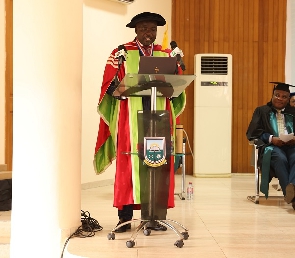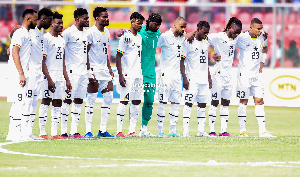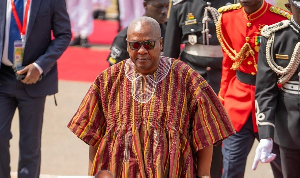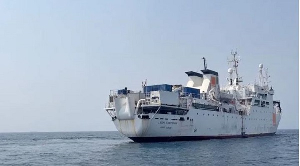Most people in the Ghanaian society have been silenced by poverty and forgotten by the broader society.
But a study by Prof Bernard Kumi Boateng, the Dean of Planning and Quality Assurance of the University of Mines and Technology (UMaT) uncovered these hidden realities, shining a light on the struggles and aspirations of the marginalized.
At his professorial inaugural lecture on the topic; "Mapping the Poor in Ghana: A Geospatial Multidimensional Poverty Index Approach", Prof Kuni-Boateng embarked on a transformative journey to unravel the complexities of poverty in Ghana.
Drawing from his extensive research and expertise in geospatial analysis, he pioneered a multidimensional poverty index that goes beyond conventional monetary measures to capture the multidimensional aspects of poverty, providing a comprehensive and in-depth understanding of the challenges faced by the poor.
In the much-anticipated lecture, Prof Bernard Kumi Boateng took the audience on a remarkable journey through the diverse landscapes of poverty in Ghana. Through the lens of geospatial analysis, he unveiled a world where poverty is not merely defined by income levels, but by a multitude of interrelated factors such as education, health, access to basic services, and social exclusion.
By mapping these dimensions of poverty, Prof Kumi Boateng sought to give voice to the voiceless, illuminating the lived experiences of those trapped in the vicious cycle of deprivation.
This research was carried out across the entire country of Ghana, with two types of data: spatial data and statistical data. His conclusions were that; over the years, monetary approach to measuring poverty has come under criticism largely because that approach is regarded as having a narrow focus, by placing emphasis on household incomes and consumption expenditure when, indeed, poverty transcends monetary indicators to include non-monetary indicators.
“Thus, non-monetary poverty measurement has received widespread attention over the last two decades. This research makes a contribution in this area by using regional-level statistical data and GIS techniques to analyse the poverty situation of Ghana through the use of a multi- dimensional non-monetary poverty index. The use of the GIS techniques provided an effective and efficient approach to mapping the spatial distribution of non-monetary poverty across the entire country”.
He noted that “ten different non-monetary indicators from three dimensions (education, health and living conditions) were used to estimate the poverty incidence (the headcount of the population who are MPI poor) and the intensity of deprivations experienced (average proportion of weighted indicators in which the MPI-poor persons are deprived)”.
The study also revealed that, “across Ghana, a considerable percentage of households are deprived of a number of non-monetary poverty indicators. Analysis of these indicators revealed wide disparities in some regions. Generally, wide disparities exist between the proportion of households deprived in the northern regions and in the southern region of Ghana. This reinforces a widely shared view of the inequality in the level of development between northern and southern Ghana”.
According to the study there is a non-correlation between poverty incidence and the intensity of deprivation, suggesting that poverty reduction in Ghana requires strategies and pathways. For instance, regions with relatively low poverty incidence and high intensity of deprivation, such as Greater Accra and Ashanti, may not require interventions on reducing the numbers of the poor but rather the average deprivation. Thus, the intervention may require focusing on the specific dimensions of deprivation.
To this end, Prof Bernard Kumi Boateng suggested that for the regions with relatively high poverty incidence and high intensity of deprivation, governments interventions should focus on first, reducing the number of poor people before reducing the deprivation.
“In these regions, the high levels of the incidence of poverty require comprehensive effort towards reducing the higher proportion of the total poor population,” he stated.
Regional News of Tuesday, 20 June 2023
Source: Thomas Tetteh, Contributor

















